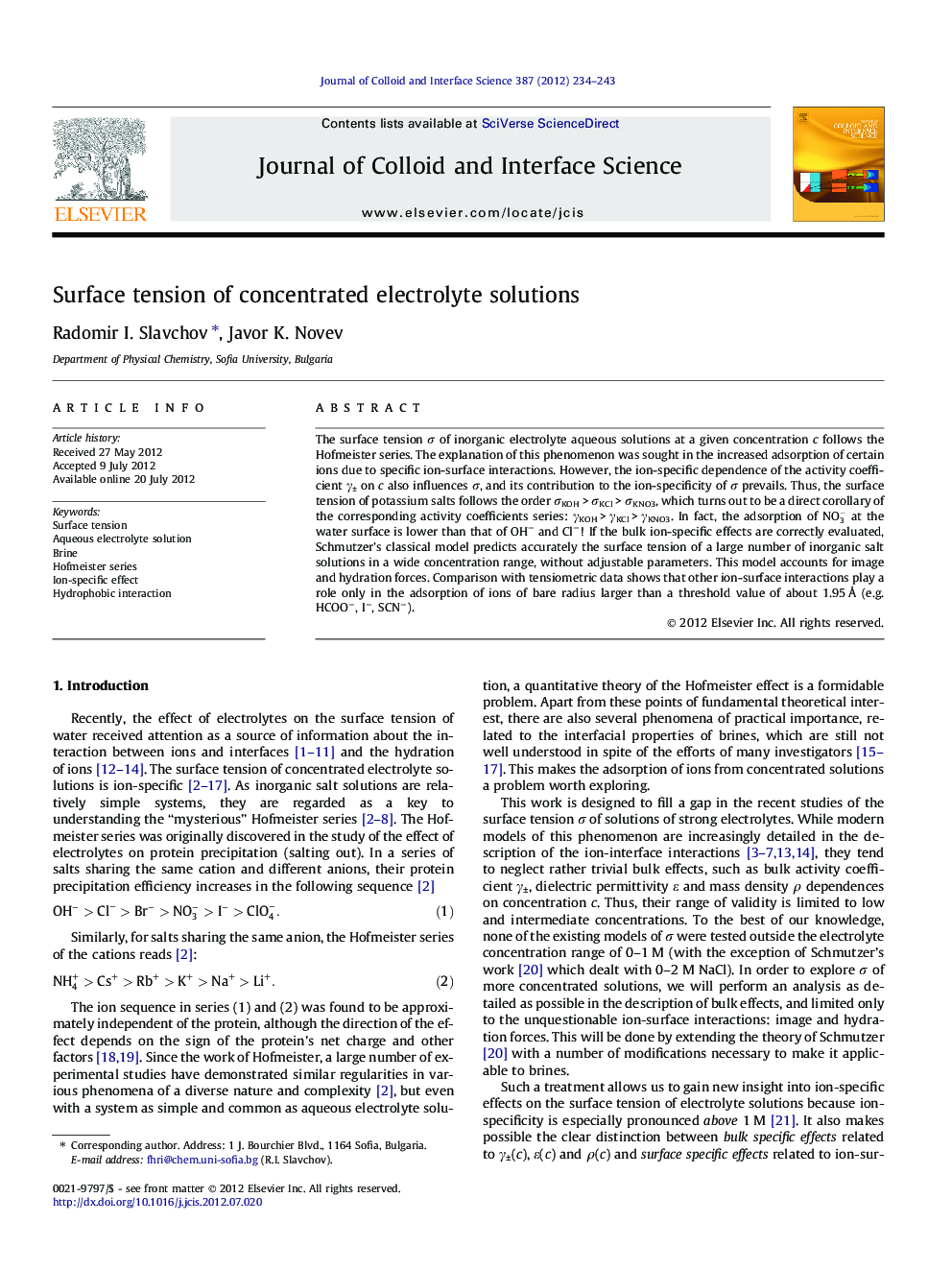| Article ID | Journal | Published Year | Pages | File Type |
|---|---|---|---|---|
| 608228 | Journal of Colloid and Interface Science | 2012 | 10 Pages |
The surface tension σ of inorganic electrolyte aqueous solutions at a given concentration c follows the Hofmeister series. The explanation of this phenomenon was sought in the increased adsorption of certain ions due to specific ion-surface interactions. However, the ion-specific dependence of the activity coefficient γ± on c also influences σ, and its contribution to the ion-specificity of σ prevails. Thus, the surface tension of potassium salts follows the order σKOH > σKCl > σKNO3, which turns out to be a direct corollary of the corresponding activity coefficients series: γKOH > γKCl > γKNO3. In fact, the adsorption of NO3- at the water surface is lower than that of OH− and Cl−! If the bulk ion-specific effects are correctly evaluated, Schmutzer’s classical model predicts accurately the surface tension of a large number of inorganic salt solutions in a wide concentration range, without adjustable parameters. This model accounts for image and hydration forces. Comparison with tensiometric data shows that other ion-surface interactions play a role only in the adsorption of ions of bare radius larger than a threshold value of about 1.95 Å (e.g. HCOO−, I−, SCN−).
Graphical abstractFigure optionsDownload full-size imageDownload high-quality image (66 K)Download as PowerPoint slideHighlights► Surface tension of brines follows Schmutzer’s model. ► Bulk activity coefficients play a central role in the Hofmeister effect. ► Hydration force is the main factor for desorption of ions in concentrated solutions. ► Ions of radius larger than the threshold value 1.9 Å are attracted by the surface. ► The affinity of NO3- to the water|air interface is lower than that of OH− and Cl−.
